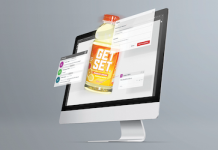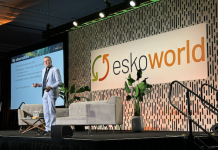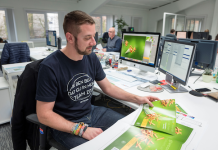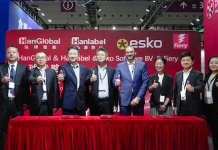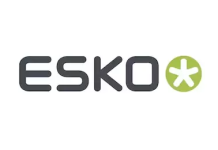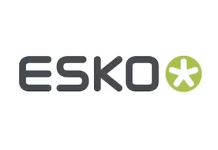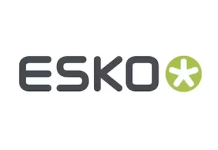Esko worked on a project with CERM, a developer of MIS for labels and packaging converters, to create a solution that would both simplify processes and expand the product offering range of Accent, part of the Asteria Labels and Packaging Group.
‘Accent was looking to improve workflow efficiency with its complex labels, everything from front and back printing, hybrid labels printed with multiple printing technologies to multi-layer labels such as duo and tri-labels,’ said Ken Polspoel, Global Solutions Manager with Esko. ‘We pride ourselves on having strong relationships with our customers and always listening to their needs, so when Accent came to us with their challenge, we immediately began exploring how our solutions could help overcome them.’
Esko collaborated on the pilot with CERM, continuing a relationship that began more than 10 years ago. ‘These discussions resulted in the development of a brand new innovation that enabled Accent to automate and streamline much of the production of complex labels,’ said Polspoel. ‘The workflow enhancements were driven by the business logic from CERM, then fully automated in Automation Engine. We were thrilled to be first to market with this new capability, and since our work with the Asteria Group, it has already been deployed more than 10 times in businesses around the world, including Europe, Asia and the USA.’
Christophe Beke, Chief Technology Innovation Officer at the Asteria Group, who managed the project for Accent, said when the pilot project began, the challenge was primarily to automate the various flavour and multi-label runs for one of their customers.
‘Though this work only represented 5% of our total orders, the complexity of the print job meant that we had both an art specialist and prepress operator employed full time just to manage the project,’ said Beke. ‘Not having the ability to manage this with automated workflows meant that different files were needed for the various stages of the job. Now it’s fully automated, everything is streamlined, removing any possibility for human error in loading the different files at the wrong time.’
Benefits of the new integration with Esko Automation Engine include the ability to automate workflows for complex jobs, everything from combination prints to front and back printing. ‘The efficiency and productivity savings since introducing the new Automation Engine integration functionality have been huge,’ said Beke. ‘If we do a peel-off label, where previously we would have had to spend around four hours in prepress, it can now be done in less than 30 minutes.’
Ken Polspoel explained that as businesses look to differentiate, and customer demands are becoming more challenging, innovations such as this can now help businesses deliver complex labels in fewer manual steps and significantly less time. ‘The need is largely dictated by market dynamics,’ said Polspoel. ‘We’ve seen regulations and legislation forcing brands to include more information than ever before on labels, and so label converters are always looking to deliver new ways to achieve that without compromising on the brand’s artistic objectives.’
‘We’ve also seen a growth of so-called hybrid or combination printing, for example where combinations of digital and flexographic or silk screen printing are all used on the same product. Making such labels can be tricky, but with Automation Engine and CERM MIS integration, we can combine the characteristics of each print method and, instead of splitting the print files, they can be done as one, and fully automated.’
The final integration was completed by Esko and CERM in late 2021 and the system is now being implemented at other Asteria Group sites and at other businesses worldwide.
‘When we developed these integration interfaces, the goal was to ease the pre-production of not only the standard labels but also the more complex labels,’ said Polspoel. ‘Making this process simple means it actually creates additional opportunities for production of higher-end labels, such as those with a foil finish. It not only makes it easier to produce more visually appealing labels, but also to develop more complex labels as part of innovative marketing and customer engagement campaigns. ‘The success of the pilot scheme with the Asteria Group and subsequent rolling out of the integrated functionalities demonstrates the depth of our partnership with CERM, with whom we have worked for more than a decade and on more than 100 collaborations,’ he said.
KALIDECK
+27 11 688 6000
https://www.kalideck.co.za



